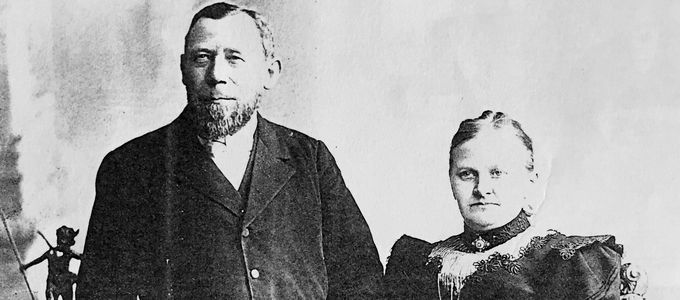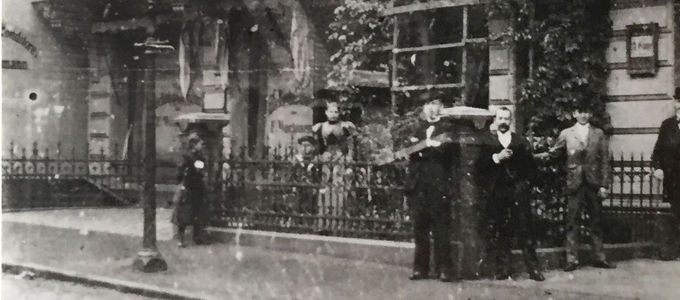
His name is not really all that well known, but he was one of the pioneers of what later came to be known as the New Apostolic Church. Apostle Friedrich Wachmann bought the first church building and published a devotional book. He was born 175 years ago to the day.
In a confidential letter to Councillor Hoppenstedt, a policeman by the name of Wiedekamp reported on strange activities: a group of people had gathered for worship in a forest near the Prussian village of Schladen—in the middle of the night. It was in that night in July 1864 that Apostle Carl Wilhelm Louis Preuß sealed the later Chief Apostle Friedrich Krebs and a certain Heinrich Christian Friedrich Wachmann.
Leader of the mother church
Wachmann was born on 25 August 1841 in Osterode (Germany). His father was a mason. The family moved to Lurup in 1867, where an opportunity had presented itself to take over a farm. This is where the divine services of the first offshoot of the Hamburg congregation took place that had broken with the Catholic Apostolic Church in 1863. The newly formed community first came together in the main house and then later in a renovated stable.
This was not the last time that Friedrich Wachmann provided the congregation with a roof over their heads. In fact, in 1893 he bought the first church building for the denomination, because the Church itself was not in a position to legally buy the property. Apostle Krebs had asked him to purchase the building situated in Hamburg-Borgfelde: the Roggenbrodsche Chapel. To this day, the location is considered the mother church of the Apostle districts of Hamburg, Bremen, and Mecklenburg.
A milestone in book form
That same year, Friedrich Wachmann received the Bishop ministry. Wachmann had been appointed as a Deacon in 1879. This was followed by the ministries of Priest and Elder. In May 1899, then, Chief Apostle Krebs ordained him an Apostle. His district included twelve congregations with about a thousand members. Soon Apostle Wachmann established new congregations in the north of Germany. A special focus of his was on the congregations in Scandinavia.
Anyone who is versed in Church history will be familiar with a milestone that appeared in book form and was published by Wachmann, who was incidentally a baker by trade. “The Liturgy: a manual of devotion for use in all divine services of the Apostolic community” (original German title: Die Liturgie – Andachtsbuch zum Gebrauch bei allen Gottesdiensten der apostolischen Gemeinschaft). When exactly the book was published is not clear, but the work is generally regarded as a link between the Church’s first own devotional book, the so-called Stechmann-Liturgy dated 1864, and the first Apostolic hymnal that was published around the turn of the nineteenth century.
A noble character
In any case, Wachmann’s liturgy was a devotional manual documenting the changes that were being introduced with regard to the celebration of divine services in the New Apostolic Church: the liturgy was simplified and emphasis put on the sermon.
How much respect and esteem Apostle Wachmann enjoyed not only in the Church but also in his social environment was illustrated in an obituary run by a newspaper in northern Germany on 7 April 1903. The Norddeutschen Nachrichten wrote: “The deceased had a noble character. Everyone who came to him found an open hand and a compassionate heart. It could not have been any other way: this man won the hearts of many. Those who sow love will reap love.”










